I have a grid of numbers (option volatilities, see picture below), of which there are few entries on the ends of the grid (i.e. it is very sparse). I would like to interpolate\fill in this grid by using the data of the entire grid, i.e. a 2-d interpolation method. I've seen some examples (e.g. here), but I'm not familiar with the scipy and numpy API, and seems like they are doing a bunch of graphing stuff not related to the actual interpolation.
To be clear, I am currently storing this data in a pandas dataframe, with indices OPT_EXPIRE_DT and OPT_STRIKE_PX, and would like to end up at the end with another pandas dataframe, but I can convert to other datatypes as needed.
Thanks for any help!

